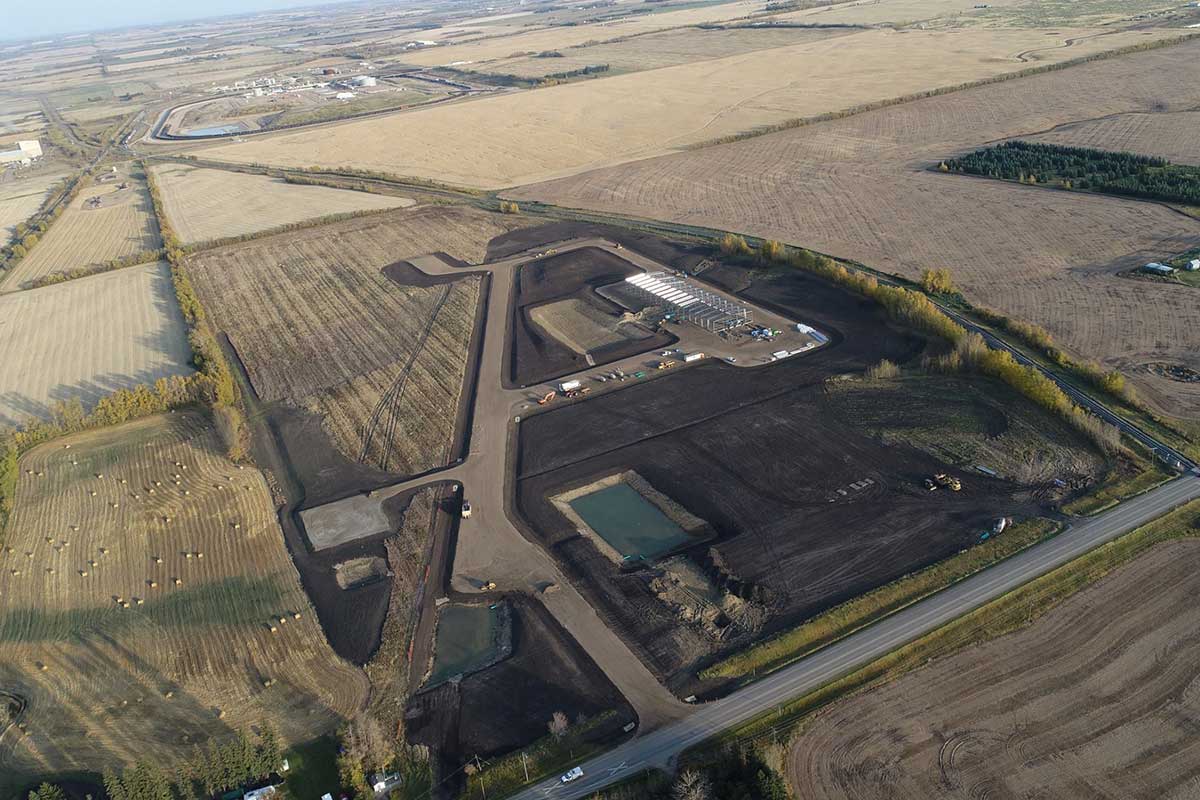Canada is able to produce the raw material at a much lower cost than anywhere else, enabling them to see a larger profit market as a result
Hemp fiber in Northern Canada
Canada is one of the largest hemp cultivators in the world with 150,000 acres of hemp being grown per year. In North Alberta though, where Canadian Rockies Hemp Corporation (CRHC) are based, there are nearly 30,000,000 acres of cultivated farmland meaning that hemp is only less than 0.1% of the other crops that are grown there. This is something that they are hoping to change over the next ten years with the aim for the hemp plant to be at least 1% of the crops grown in Canada.
Due to the long daylight hours, 17+ in the summer, hemp is able to grow extremely quickly in Northern Canada making this a profitable up and coming industry to invest in. At CRHC they grow the hemp plant for the biomass rather than the seed or the flower; this means that the growing cycle is shorter for them, as to ensure a better-quality fiber they only have it in the ground for 60-75 days before cutting it down and beginning the decortication process.
CRHC manufacturing the fiber and sending it to other businesses
Often, they see six inches of growth a day during the max growing period which means that they aren’t competing with corn or soybeans for land as it can fit in around the crop rotation. Due to CRHC being a new business, having started up three years ago, they are currently working on connecting the missing links within production and focusing on producing the raw materials with the farmers. They are manufacturing the fiber and sending it to other businesses who then turn it into insulation, clothing or construction materials.
Whilst they can create their own compressed animal bedding, which they sell at a local farm, they are mostly selling their fiber to distributors whilst continuing to develop their supply of raw materials and try to get it out to a wide range of industries. By being a B2B organization they are able to expand as a company, produce wider acres of hemp before selling their own line of products on a wider scale.
Decortication process
When it comes to turning the hemp plant into a fiber it goes under a process called decortication. This is a non-pollutive mechanical process which is different to the processes used by cotton and polyester farms. Typically, they use chemicals or water treatment, but over in Canada they use a more mechanical process that cuts down on the carbon emissions and avoids polluting the local farmland or causing an increase in water wastage.
Not only does hemp grow quickly and with no need for pesticides to grow effectively, it is also able to be manufactured into a fiber in a less pollutive manner. Just recently CRHC applied for a pattern for a water treatment degumming process. This will be a closed loop system, allowing them to reuse the water and avoid any harsh chemicals used in the process from reaching the soils surrounding.
Lampoon reporting: Hemp market costs and figures
The current market price of hemp ranges from country to country, and within each individual product range. For example, in France they focus on the textile industry so that is their main market but they also do invest in the animal bedding market as well the industrial market through things like insulation.The various ways of manufacturing the hemp fiber and turning it into different end products means that they can sell their fiber in multiple industries for a variety of prices. This makes it difficult to analyze the profitability of the fiber as not only does it vary across countries and industries, it is also an up-and-coming product that has only recently become popular.
Looking at the societal trends surrounding hemp fiber and sustainable manufacturing we are able to analyze whether or not this is a profitable industry to go into. With the banning of single use plastics in Oklahoma and the awareness around deforestation and the harsh effects of growing cotton, Canada has seen an increase in interest from the wider population wanting to learn more about new, raw, sustainable materials. Canada is able to produce the raw material at a much lower cost than anywhere else, enabling them to see a larger profit market as a result.
Canadian Hemp Trade Alliance (CHTA)
Something else that has helped with this global demand is the formation of the Canadian Hemp Trade Alliance (CHTA) within Canada as it has helped to combat the back-and-forth arguments when it comes to growing hemp on an industrial scale. When speaking to Aaron Barr from CHRC he stated that «the CHTA has been a major component for the reason why the regulations to grow and process hemp have relaxed so much on a federal level».
Before 2003 (when the CHTA was formed), businesses would have had to have had a criminal record check and THC testing at all stages of the growing and manufacturing process, even when producing industrial hemp rather than the seed or flower. Since the alliance was formed, there is no longer a need for these tight restrictions and it is easier to apply for a license to grow hemp as it costs $15, can be applied for online and renewed every year.
CHTA – growing hemp for medicinal purposes
This has helped more individuals to enter this industry without all of the rigorous testing and has stopped the need for permits and inspections when businesses are exporting their products. Those who grow hemp for medicinal purposes still do require permits and criminal record checks, but for those like CRHC, this has helped to make the whole process easier.
Within the CHTA there are different industry members from farmers, processors and manufacturers, to researchers and marketers. This alliance allows people at all stages of the hemp fiber production line to have their voice heard and allows new, smaller businesses to make connections and learn from other longer standing companies to bridge those gaps and ensure success for all.
Cost competitiveness of growing and processing hemp
In comparison to other industries there isn’t much of a difference when it comes to the cost of growing and processing the hemp fiber once you have all the infrastructure in place. At the beginning when setting up a business you have to buy a building, the processing and harvesting equipment, and pay the farmers for the product, all before you can actually start processing and selling the fiber. This is no different from other large processing industries and so hemp isn’t much more expensive to produce than cotton and polyester fibers.
The only real cost is transporting the biomass from the fields to the processing infrastructure, and CRHC have tried to avoid this since to haul this raw material to a smaller decortication site it’s low value when it’s hemp straw. By building the decortication sites next to the farmland, they are able to cut down this cost as well as being able to speed up the overall process and produce the valuable fiber easily and on a larger scale.
Hemp – cost competitive with the rest of the textile industry
Even though hemp has many advantages it is to remember that it is cost competitive with the rest of the textile industry and the only way to cut down the costs is to be a part of that mainstream processing like the rest of the industry. In a mission to cut down their own costs, CHRC have built their first plant this year so that they can do 50 thousand acres of processing a year, which is only a small dent as far as agriculture in Alberta goes.
Alberta is home to 30 million acres of farmland, 5 million of that is used to grow canola – their most common crop – and 50 thousand acres for one facility is nothing in comparison. 50 thousand acres still converts to roughly 50 thousand tons of raw material, which compared to other countries such as China and Pakistan, is a larger crop yield than elsewhere. Over the next 5 years CHRC plans on building 10 facilities which will help to speed up the decortication processing, enabling them to produce an even larger amount of hemp fiber in a smaller space of time.
The Canadian Rockies Hemp Corporation
Set up in 2003 to start producing a high-quality hemp fiber to see globally, The CRHC produces hemp biomass around the rotational crop cycles of canola and wheat in North Alberta, before starting the decortication process and turning into a sellable fiber.
Much other their fiber gets turned into animal bedding, insulation and construction materials, with there also being many other uses for this fiber as well. Over the next 5 years they plan on building 10 facilities across North Alberta to help them produce a closed cycle degumming process which will allow them to enter the textile industry with cottonized hemp fiber.




















